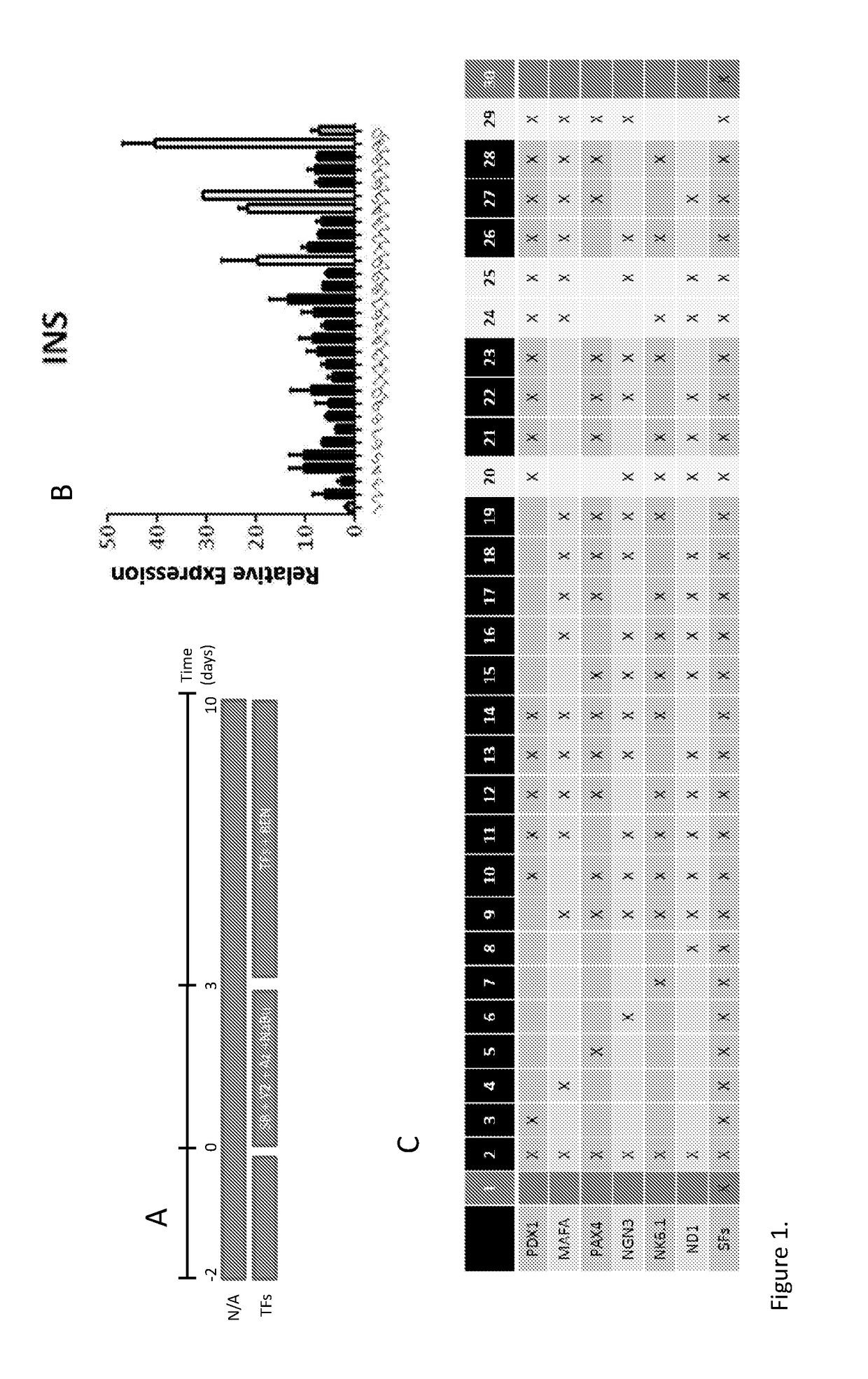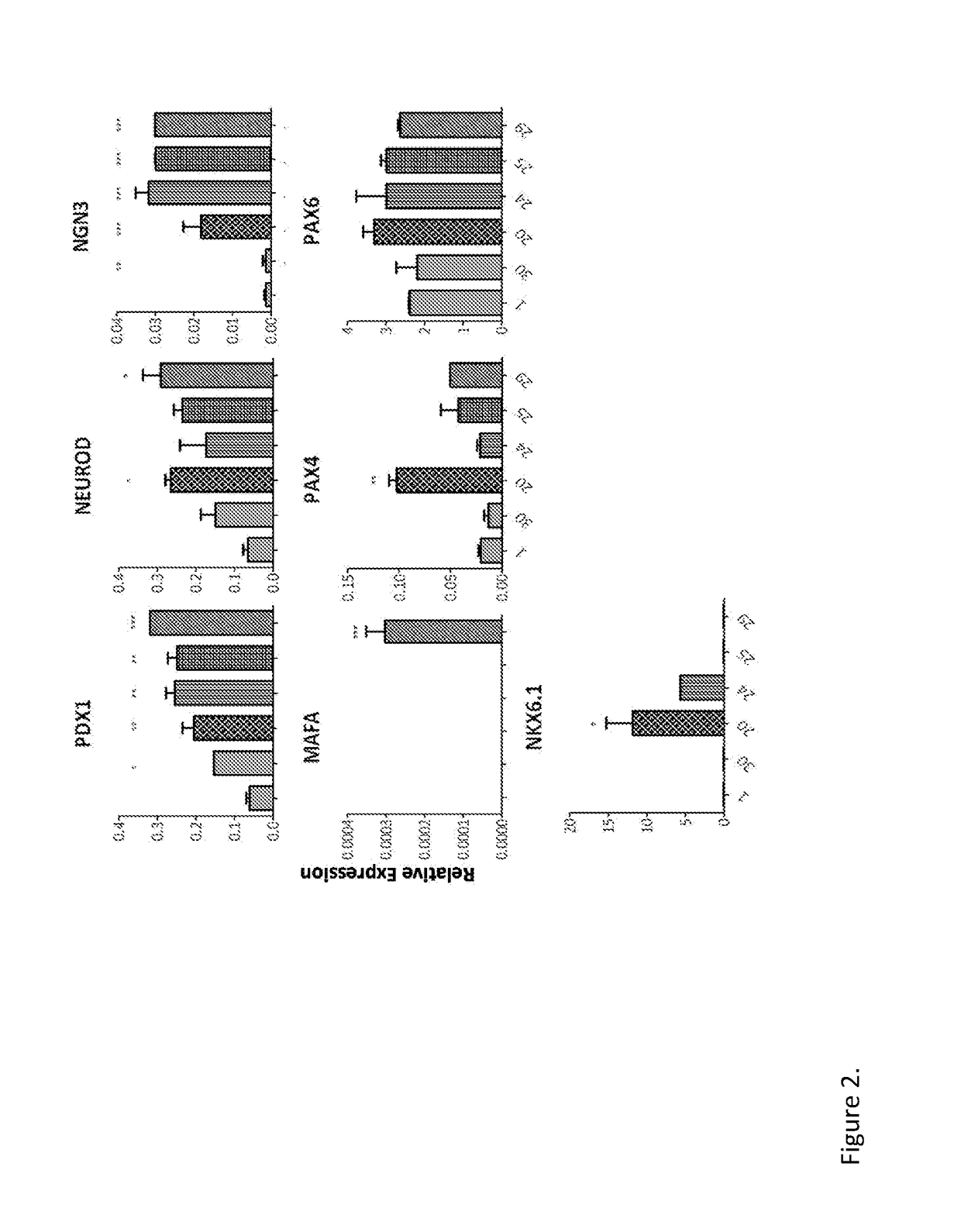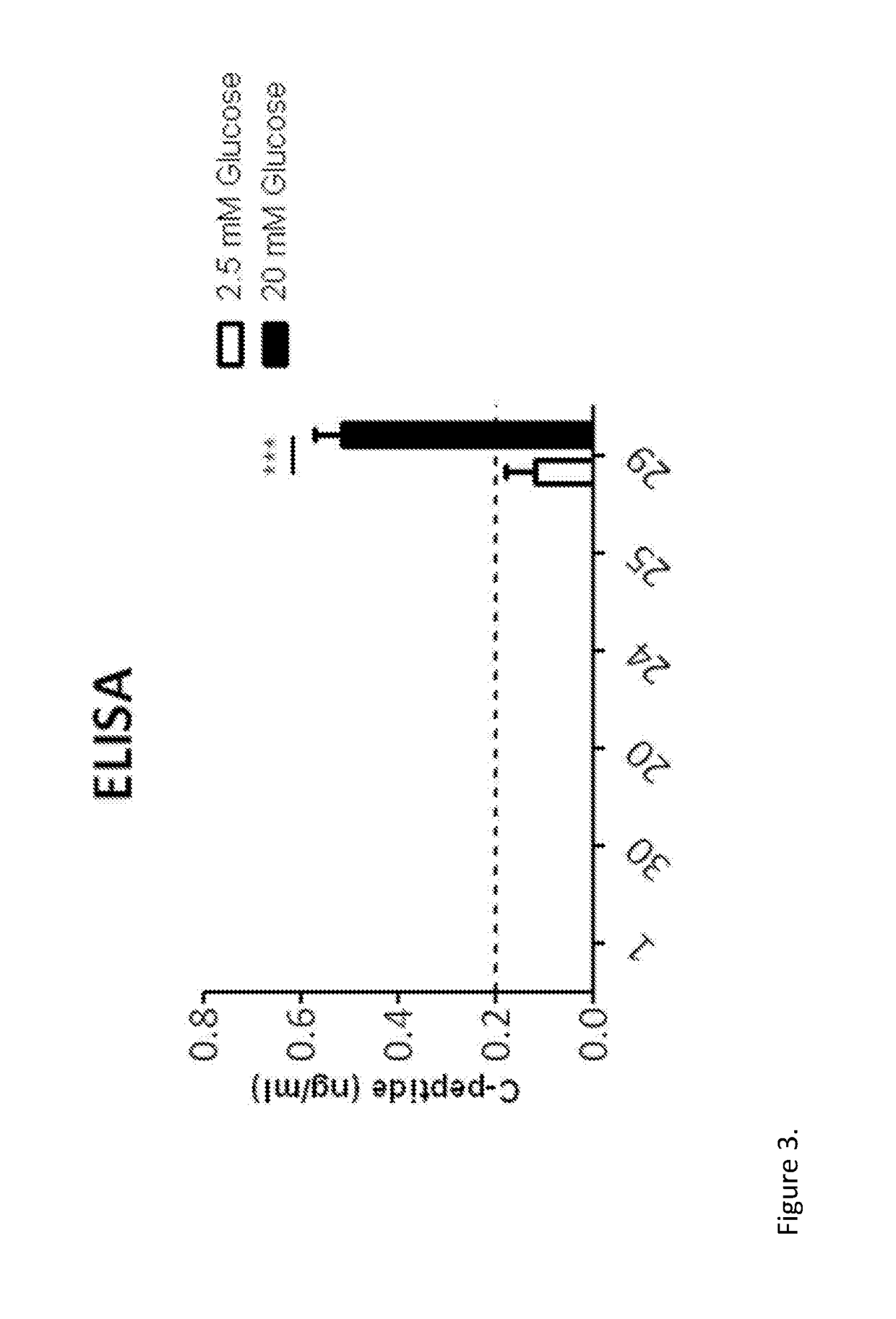Methods of Obtaining Pancreatic Endocrine Cells
a technology of endocrine cells and pancreatic glands, which is applied in the field of producing pancreatic endocrine cells, can solve the problems of -cell failure, difficult treatment, -cell apoptosis, etc., and achieve the effect of enhancing reprogramming and increasing the quantity of endocrine material
- Summary
- Abstract
- Description
- Claims
- Application Information
AI Technical Summary
Benefits of technology
Problems solved by technology
Method used
Image
Examples
example 1
Materials and Methods
[0225]Culture of Human Exocrine Pancreatic Fractions.
[0226]All human tissue was procured with appropriate ethical consent. Human pancreata (n=42) were isolated from brain-dead adult donors in the Scottish Islet Isolation Laboratory (SNBTS, Edinburgh, UK). The mean donor age was 39.4 years (range 23-61 years) and BMI 27.2 kg / m2 (range 22-36.5 kg / m2).
[0227]Culture where EMT is Inhibited.
[0228]Following islet isolation the low purity exocrine fractions were transported to Aberdeen where the cells were immediately cryopreserved in liquid nitrogen at a density of 300,000 exocrine clusters per vial. The cells were cryopreserved in 90% fetal bovine serum (FBS, Gibco, Life Technologies, Paisley, UK) and 10% DMSO (Sigma Aldrich, Dorset, UK). Human exocrine fractions were thawed and plated on tissue culture 9 cm2 dishes (Greiner, Stonehouse, UK) and cultured for two days in RPMI 1640 (Gibco, Life Technologies) supplemented with 10% foetal bovine serum (FBS), 10 mM HEPES, ...
example 2
Methods
[0282]Reprogramming of Human Exocrine Pancreatic Fractions
[0283]Human exocrine fractions were thawed and plated on tissue culture 9 cm2 dishes (Greiner, Stonehouse, UK) and cultured for two days in RPMI 1640 (Gibco, Life Technologies) supplemented with 10% foetal bovine serum (FBS), 10 mM HEPES, 1 mM sodium pyruvate (all from Gibco) and 75 μM β-mercaptoethanol (Sigma Aldrich). After 48 h, the cells were incubated for another 72 h in serum free medium (SFM) prepared with RPMI 1640, insulin-transferrin-selenium (Gibco) and 1% bovine serum albumin (Sigma), supplemented with 10 μM SB431542, 2 μM Y27632, 1 μM 5-Aza-2′deoxycytidine and 10 mM sodium butyrate (all from Sigma). On the next day the cells were incubated for 4 h with the adenoviruses encoding pancreatic transcription factors PDX1, MAFA, NGN3 and PAX4. On the following day the medium was changed for SFM supplemented with 1 nM betacellulin (R&D systems, Abingdon, UK), 10 nM exendin-4 and 10 mM nicotinamide (both from Sigma...
PUM
 Login to View More
Login to View More Abstract
Description
Claims
Application Information
 Login to View More
Login to View More - R&D
- Intellectual Property
- Life Sciences
- Materials
- Tech Scout
- Unparalleled Data Quality
- Higher Quality Content
- 60% Fewer Hallucinations
Browse by: Latest US Patents, China's latest patents, Technical Efficacy Thesaurus, Application Domain, Technology Topic, Popular Technical Reports.
© 2025 PatSnap. All rights reserved.Legal|Privacy policy|Modern Slavery Act Transparency Statement|Sitemap|About US| Contact US: help@patsnap.com



